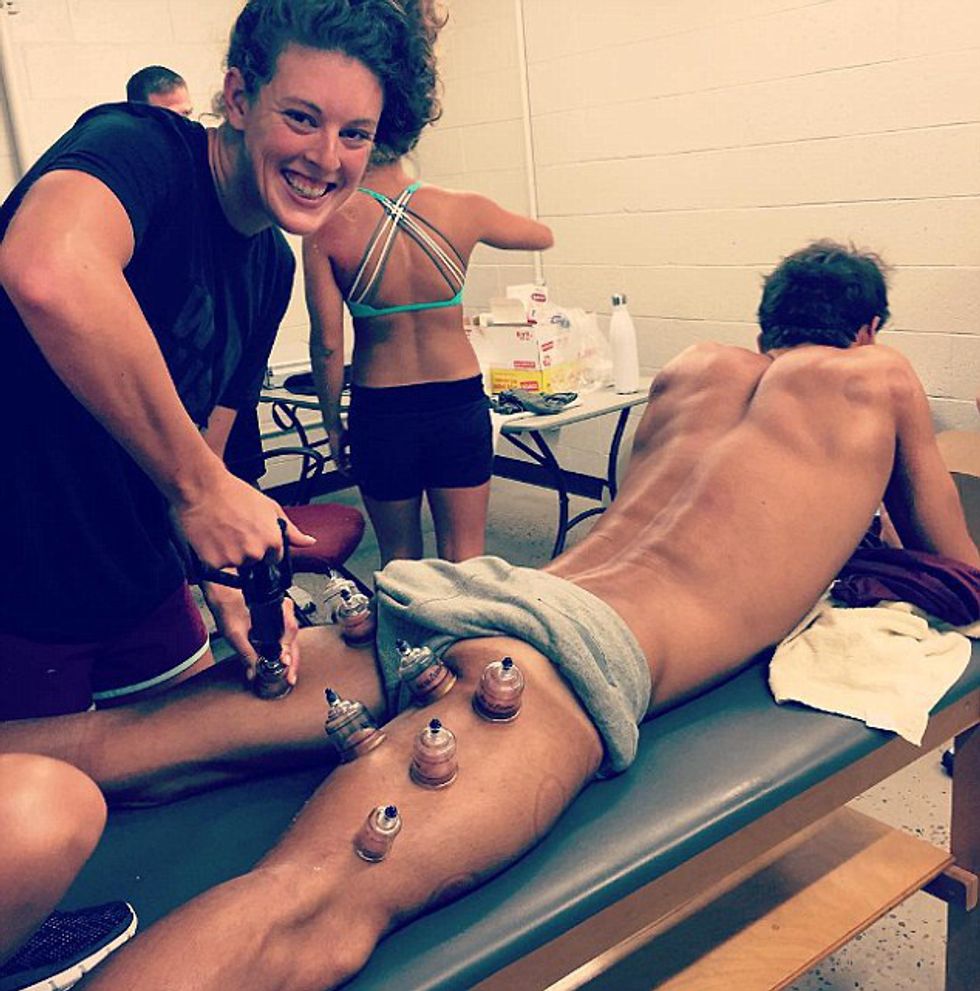If you've been following the Olympics at all, you definitely know Michael Phelps, the now 22-time medaling swimmer. But if you've been keeping up with his races, you may have noticed something a little... different about his back. Phelps seems to have been sporting huge, circular purple bruises all over his body since the beginning of the games. Check it out.
So what are they? As it turns out, Phelps has been engaging in an ancient Chinese medical treatment referred to as "fire cupping". You can watch a video of the procedure here, but be warned, if you're creeped out by blood it might now be for you.
Fire cupping involves taking a series of glass globes or jars, and removing the oxygen from the inside, then placing them on the muscles. The oxygen can be removed from the inside of the jars ether by placing a small torch inside for a brief second to burn it (where the name comes from) or through the modern method of sucking the oxygen out via an attached machine. The cups are then placed over the skin; because the oxygen has been removed, the skin will try to fill the void, causing a sucking sensation. Through proponents claim that the technique doesn't hurt, the suction motion is enough to break the capillaries beneath the skin and cause a bit of blood loss, causing the signature bruises. If this process seems a little bit deja vu, it's the same science behind why hickeys leave bruising. Proponents of cupping therapy claim that the procedure removes toxins from the blood, draw blood to an afflicted area, improve sore muscles and improve athletic performance. Phelps even posted a photo of himself on Instagram, thanking his therapy for his pre-competition cupping session.
But does cupping actually do anything to improve health or a swimmer's performance? Experts are skeptical, and believe that there may be more of a placebo effect than a physiological effect in play. Keegan Robinson, Phelps personal trainer, told the New York Times that Phelps has been cupping before races so long that it would be more mentally detrimental to stop than biologically. "There is a psychological component where Michael has been doing this to feel good for a long time, about two years,” Robinson told Times, Anything you can do to get the body to feel good — you have to use an educational assessment on it. You have to make sure that what you’re doing is causing a physiological intent to recover."
While the science behind cupping is sketchy, there's no doubt that if the therapy helps gear Phelps up to psychologically win 22 gold medals, there's probably not a big reason to quit.







 Photo by
Photo by  Photo by
Photo by  Photo by
Photo by 



















